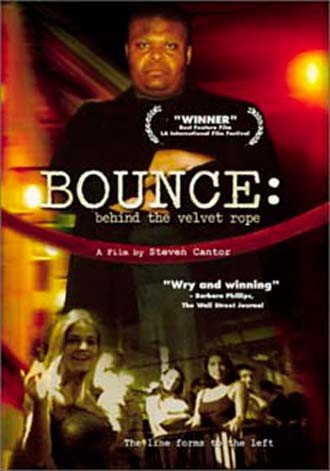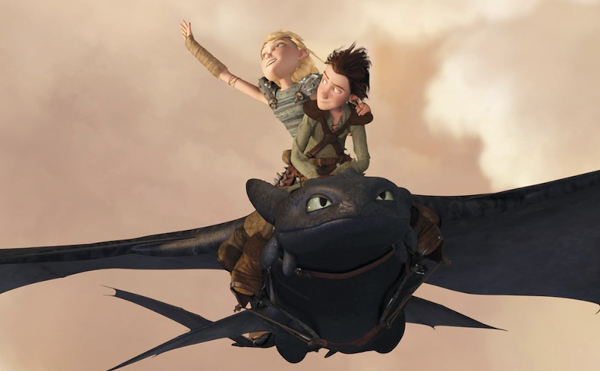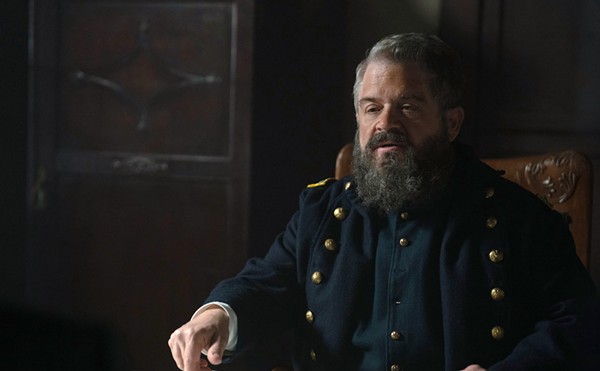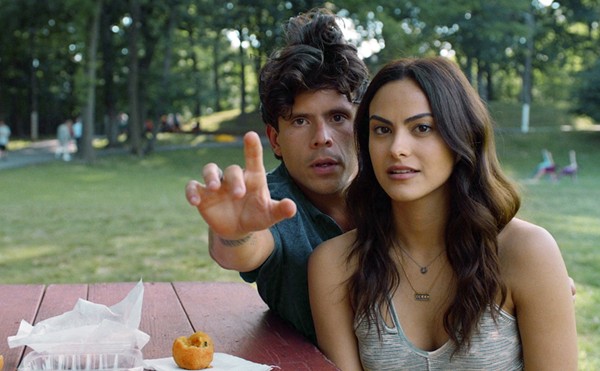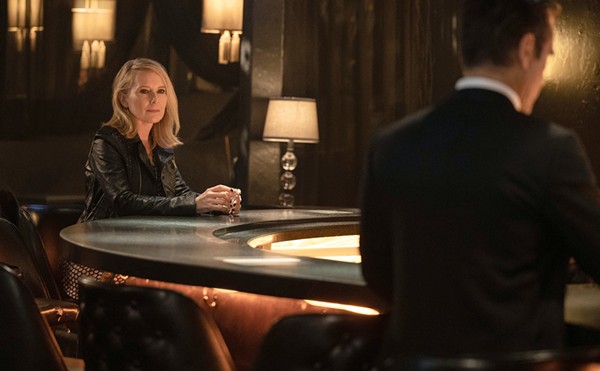Chulas Fronteras (Brazos Films)
Jai Été au Bal (Brazos Films)
Standing in the Shadows of Motown (Artisan)
Bloody Sunday (Paramount)
Hell House (Plexifilm)
Bounce: Behind the Velvet Rope (Wellspring)
25th Hour (Touchstone)
Dance for Camera (First Run Features)
These days, purveyors of Tex-Mex music are used to being taken seriously by at least some outsiders, but it wasn't always that way. Back when conjuntos were rarely heard by Northern ears, a guy named Chris Strachwitz formed Arhoolie Records to document aging masters before they passed away. In the informal Chulas Fronteras (Brazos Films), Strachwitz and Les Blank travel the border towns, sitting down with folks like the Jiménez brothers and setting cameras up in tiny bars. The film is more about capturing the feel of the music than writing its history, and - as always in Blank's films - food is essential to the atmosphere: Witness the legendary Lydia Mendoza, up to her elbows in tamale making before taking to the bandstand. Blank's better known Jai Été au Bal, which focuses on Cajun and Zydeco music, is also being released by Brazos, and both discs are packed with footage that didn't make the final cut.
Speaking of musicians and food, the recent Standing in the Shadows of Motown (Artisan) takes you to dinner with the men who made all those Marvin Gaye and Smokey Robinson records sound so amazing. The film didn't take off in theaters to the degree its fans expected; here's hoping these witty and funk-filled old instrumentalists get their share of attention on DVD.
It would be a shame if Motown got overlooked, but I can't urge you strongly enough to rent Bloody Sunday (Paramount) - one of last year's 10 best films, a day in the life of Ireland's "troubles" that only sounds like homework until it's on the screen, grabbing you by the scruff of the neck. Although the participants are played by actors, this re-created history is so visceral and immediate that it feels like a documentary, albeit one in which the filmmakers happened to be everywhere at once. James Nesbitt plays a real-world Gary Cooper, trying desperately to get some justice without seeing his town turned into a war zone; the way English soldiers respond to him is an object lesson in the faulty wisdom of letting men with guns participate in the exercise of free speech.
Hell House (Plexifilm) centers on another hotbed of controversy, a fundamentalist Texas church which stages the strangest Halloween haunted house ever. Each October, their "Hell House" assaults the curious with scenes of botched abortions, AIDS victims, rape, and incest, all of which are geared toward scaring the unredeemed into making friends with Jesus. Despite the hokey drama, we see in the film that this pitch actually works. Director George Ratliff, thankfully, doesn't condescend to his subjects; he lets them explain themselves and watches them do their thing, and most of the people on camera come off as fairly decent people no matter what you think of their politics. That may not make for the most incendiary
Bounce: Behind the Velvet Rope (Wellspring) is a portrait of a, well, more colorful sort of character. The filmmakers get personal with the burly chaps who keep nerds away from the pretty people in the bars of New York, and they're not all guys you would like to have over for dinner. Ranging from old British vets with nothing to prove, to walking hard-ons who admit that they got into the biz because they like to beat people up, the interviewees are never boring. A couple are even likable, especially the top-heavy youngster who is kind but not very smart and hopes to follow Mr. T's career path (presumably sans the 1-800-COLLECT commercials).
While Bounce looks at an aspect of the Big Apple that is ongoing, Spike Lee's latest joint is as trapped in time as its title. I still haven't changed my mind about 25th Hour (Touchstone), which has many serious flaws as a drama. But the movie is going to have a lasting value for its opening credits scene, a weighty and beautiful depiction of the spotlight array used to mourn the passing of the Twin Towers. For better or worse, Manhattan's skyline will soon be transformed, but Lee gives the current battle-scarred incarnation its due in a few haunting minutes, using Terence Blanchard's evocative score to create something both elegiac and proud.
Finally, Dance for Camera (First Run Features) is unlike any of these, and probably unlike any film you've seen. The six short films here use choreography as screenwriting, allowing dance artists to compose their movements with the camera, not a static stage audience, in mind. It's a mixed bag, and few viewers will like all of the films, but at their best these shorts are thrilling, using locations and editing to play up the narrative potential in even the most abstract movements. Alternatingly funny, melancholy, overly intellectual, and full of life, Dance holds out great promise for those of us who would like to see the latest vogue for movie musicals head into uncharted territory. •

